
Robert Laurel Crippen is an American retired naval officer and aviator, test pilot, aerospace engineer, and retired astronaut. He traveled into space four times: as pilot of STS-1 in April 1981, the first Space Shuttle mission; and as commander of STS-7 in June 1983, STS-41-C in April 1984, and STS-41-G in October 1984. He was also a part of the Manned Orbiting Laboratory (MOL), Skylab Medical Experiment Altitude Test (SMEAT), ASTP support crew member, and the Approach and Landing Tests (ALT) for the Space Shuttle.
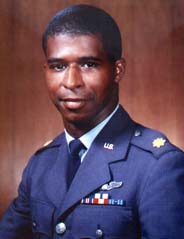
Robert Henry Lawrence Jr. was a United States Air Force officer and the first African-American astronaut.
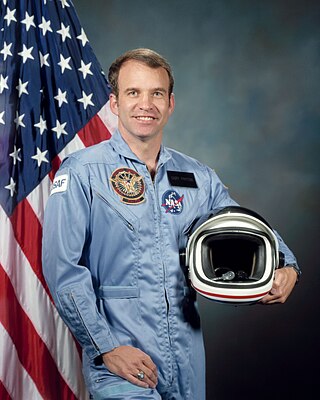
Colonel Gary Eugene Payton, USAF, is an American astronaut and USAF Manned Spaceflight Engineer. Payton flew on the STS-51-C mission aboard the Space Shuttle Discovery in January 1985. He later served as Deputy Undersecretary of the Air Force under the Bush and Obama Administrations.

Karol Joseph "Bo" Bobko was an American aerospace engineer, U.S. Air Force officer, test pilot, and a USAF and NASA astronaut. Bobko was the first graduate of the U.S. Air Force Academy to travel in space and the first person to fly on a space shuttle on three different missions: STS-6, STS-51-D, STS-51-J.
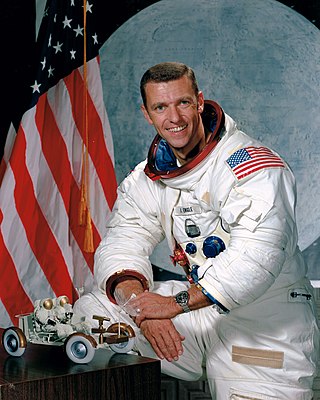
Joe Henry Engle is an American pilot, aeronautical engineer and former NASA astronaut. He was the commander of two Space Shuttle missions including STS-2 in 1981, the program's second orbital flight. He also flew two flights in the Shuttle program's 1977 Approach and Landing Tests. Engle is one of twelve pilots who flew the North American X-15, an experimental spaceplane jointly operated by the Air Force and NASA.

Charles Gordon Fullerton was a United States Air Force colonel, a USAF and NASA astronaut, and a research pilot at NASA's Dryden Flight Research Facility, Edwards, California. His assignments included a variety of flight research and support activities piloting NASA's B-52 launch aircraft, the Boeing 747 Shuttle Carrier Aircraft (SCA), and other multi-engine and high performance aircraft.

Robert Franklyn "Bob" Overmyer was an American test pilot, naval aviator, aeronautical engineer, physicist, United States Marine Corps officer, and USAF/NASA astronaut. Overmyer was selected by the Air Force as an astronaut for its Manned Orbiting Laboratory in 1966. Upon cancellation of the program in 1969, he became a NASA astronaut and served support crew duties for the Apollo program, Skylab program, and Apollo-Soyuz Test Project. In 1976, he was assigned to the Space Shuttle program and flew as pilot on STS-5 in 1982 and as commander on STS-51-B in 1985. He was selected as a lead investigator into the Space Shuttle Challenger disaster in 1986, retiring from NASA that same year. A decade later, Overmyer died while testing the Cirrus VK-30 homebuilt aircraft.

Donald Herod Peterson was a United States Air Force officer and NASA astronaut. Peterson was originally selected for the Air Force Manned Orbiting Laboratory (MOL) program, but, when that was canceled, he became a NASA astronaut in September 1969. He was a mission specialist on STS-6 on board Challenger. During the mission Peterson performed a spacewalk to test the new airlock and space suits. He logged 120 hours in space. Peterson retired from NASA in 1984.

Brian Duffy is a retired U.S. Air Force colonel and a former NASA astronaut. He flew aboard four Space Shuttle missions.

Steven Wayne Lindsey is a retired U.S. Air Force officer and NASA astronaut. Lindsey served as Chief of the NASA Astronaut Office from September 2006 until October 2009.

The Manned Orbiting Laboratory (MOL) was part of the United States Air Force (USAF) human spaceflight program in the 1960s. The project was developed from early USAF concepts of crewed space stations as reconnaissance satellites, and was a successor to the canceled Boeing X-20 Dyna-Soar military reconnaissance space plane. Plans for the MOL evolved into a single-use laboratory, for which crews would be launched on 30-day missions, and return to Earth using a Gemini B spacecraft derived from NASA's Gemini spacecraft and launched with the laboratory.
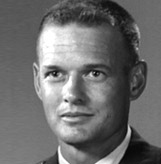
Albert Hanlin "Al" Crews Jr., , is a former American chemical and aeronautical engineer, and U.S. Air Force astronaut.
Blue Gemini was a United States Air Force (USAF) project first proposed in August 1962 for a series of seven flights of Gemini spacecraft to enable the Air Force to gain crewed spaceflight experience prior to the launch of the Manned Orbital Development System, or MODS. The plan was to use off-the-shelf Gemini spacecraft.

John "Jack" Lawrence Finley was a United States Navy aviator and was selected as an astronaut.

NASA Astronaut Group 7 was a group of seven astronauts accepted by the National Aeronautics and Space Administration (NASA) on August 14, 1969. It was the last group to be selected during the Project Apollo era, and the first since the Mercury Seven in which all members were active-duty military personnel, and all made flights into space.
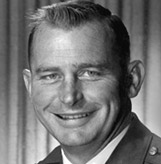
Richard Earl "Dick" Lawyer was a USAF astronaut, test pilot, and combat veteran. Although he trained for the USAF Manned Orbital Laboratory (MOL), the program was cancelled before any of the MOL crews reached space.
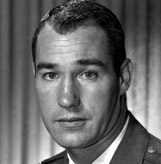
Francis Gregory "Greg" Neubeck is a retired Colonel in the United States Air Force and a former USAF astronaut. Although he trained for the USAF Manned Orbital Laboratory (MOL), the program was cancelled before any of the MOL crews reached space.
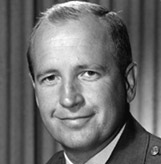
James Martin Taylor was a United States Air Force astronaut and test pilot. Although he trained for the USAF Manned Orbital Laboratory (MOL), the program was cancelled before any of the MOL crews reached space.
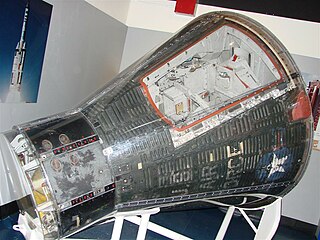
Gemini SC-2 was the second NASA Project Gemini full-up reentry capsule built. This McDonnell Gemini capsule was the first space capsule to be reused, flying twice in suborbital flights. SC-2 flew on Gemini 2 and OPS 0855 flights. The capsule is currently on display at the Air Force Space and Missile Museum at Cape Canaveral Air Force Station.


















